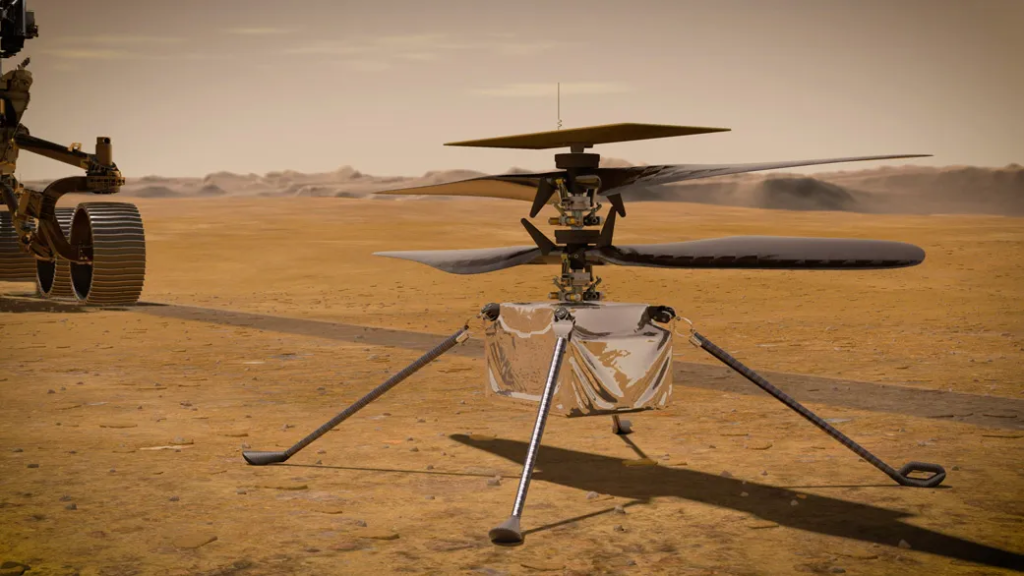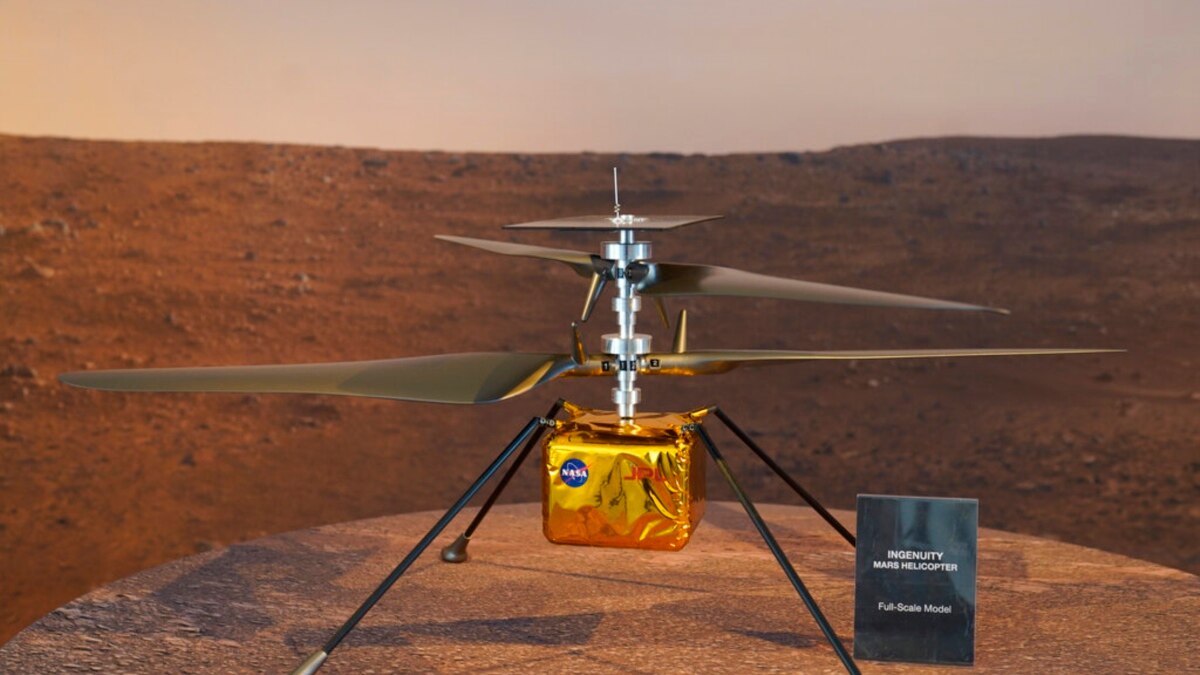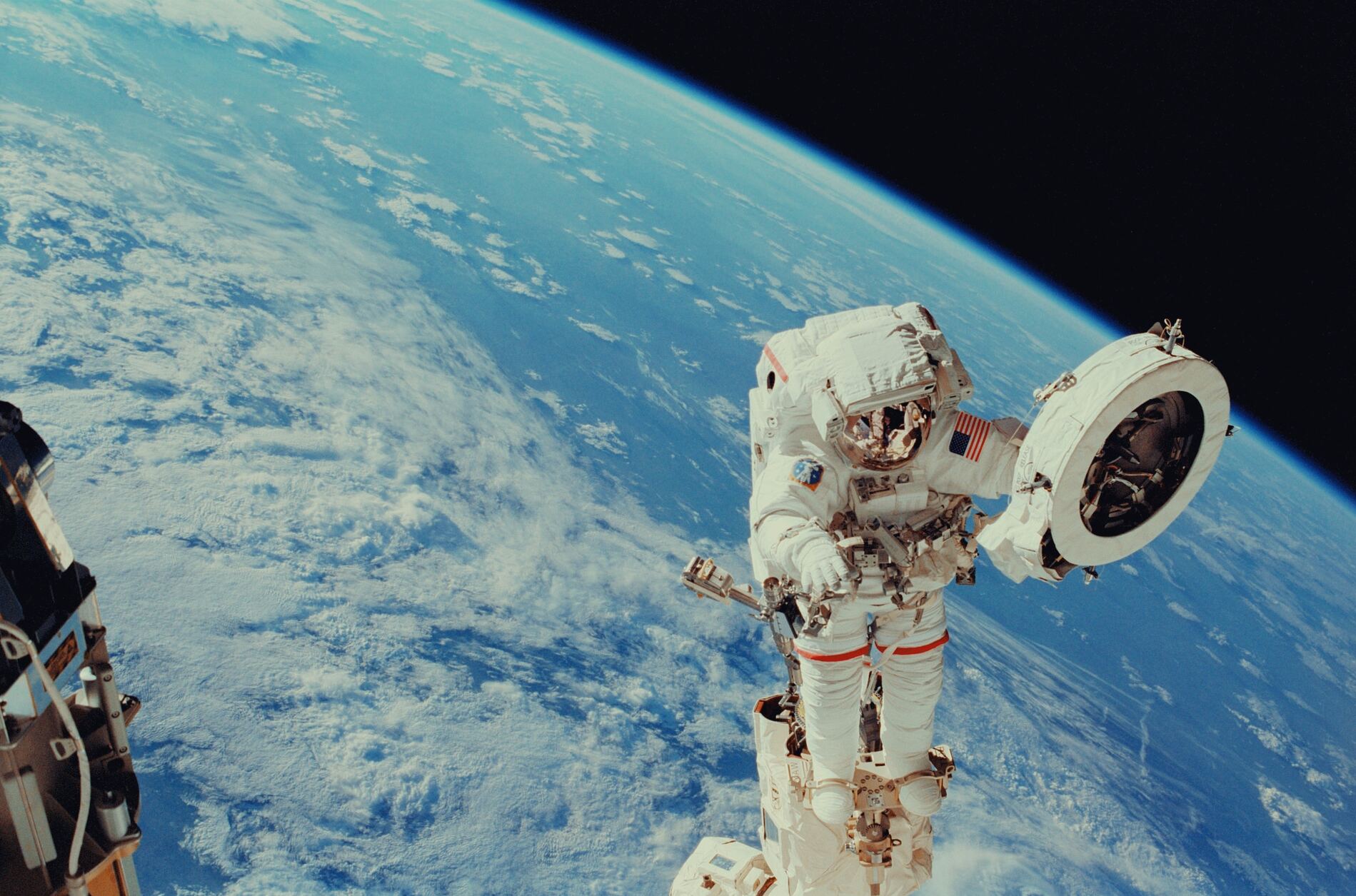The American space agency NASA, renowned for its pioneering space exploration efforts, is currently conducting dual aircraft experiments – one on Mars and another on Earth. This duality of exploration showcases NASA’s commitment to advancing aerospace technology both within and beyond our planet.

Credit: NASA
Ingenuity’s Historic Flights on Mars
Ingenuity, NASA’s experimental helicopter, has been redefining the possibilities of flight on Mars since its arrival with the Perseverance rover in February 2021. Situated in the Jezero Crater, both the rover and the helicopter have been tirelessly collecting data and images, contributing to the search for signs of ancient life on the Red Planet.
In April 2021, Ingenuity achieved a monumental feat – becoming the first aircraft to perform a powered, controlled flight on another planet. Originally planned for just five flights, Ingenuity has exceeded all expectations, completing 66 flights to date. Each flight provides invaluable insights for future space-bound aircraft.
Travis Brown, Ingenuity’s chief engineer at NASA’s Jet Propulsion Laboratory (JPL), highlights the aircraft’s continuous evolution. Recently, Ingenuity has doubled its top speed and altitude records, enhancing both its operational efficiency and landing capabilities.
However, the flights are brief, typically spanning two to three minutes, due to energy and temperature constraints. The navigation system also limits the helicopter’s speed. To overcome this, the Ingenuity team has strategically increased the flight altitude, allowing for longer visual contact with surface markers for better navigation.

Breakthroughs and Records on Mars
Ingenuity’s recent flights have been particularly groundbreaking. On its 61st flight, it reached an altitude of 24 meters, exploring Martian wind patterns. Flight 62 saw the helicopter break its speed record, reaching 10 meters per second. This flight was pivotal, as Ingenuity identified a new area for Perseverance to conduct scientific research.
Earth-Based Testing for Future Mars Helicopters
Parallel to Ingenuity’s Mars missions, Earth-based teams are experimenting with new rotor blades, anticipating the next generation of Mars helicopters. The testing involves rotor blades made of carbon material, longer than those of Ingenuity, designed for greater speed and strength. Such advancements are crucial for developing larger, more complex Martian helicopters.
In recent Earth experiments, the rotor blades achieved speeds near Mach 1, the speed of sound, within a Mars-like environment simulated at NASA’s JPL. The testing team, led by Tyler Del Sesto, pushed the blades to 3,500 rpm – significantly faster than Ingenuity’s blades. This successful test marks a transition from theory to readiness for Martian conditions.
Looking Ahead: Balancing Innovation and Safety
As NASA continues to push the boundaries of interplanetary aviation, the balance between innovation and safety remains critical. Future helicopter designs must manage the trade-off between blade speed and control to avoid potential crashes. The ongoing tests and research are a testament to NASA’s unwavering dedication to advancing our understanding of Mars and the possibilities of flight in extraterrestrial environments. With these efforts, NASA is not only writing new chapters in the history of space exploration but also paving the way for more ambitious missions in the future.





